The Economics and Statistics Division maintains archives of previous publications for accountability purposes, but makes no updates to keep these documents current with the latest data revisions from Statistics Canada. As a result, information in older documents may not be accurate. Please exercise caution when referring to older documents. For the latest information and historical data, please contact the individual listed to the right.
<--- Return to Archive
For additional information relating to this article, please contact:
April 23, 2020IMPACTS OF COVID-19 ON CANADIANS 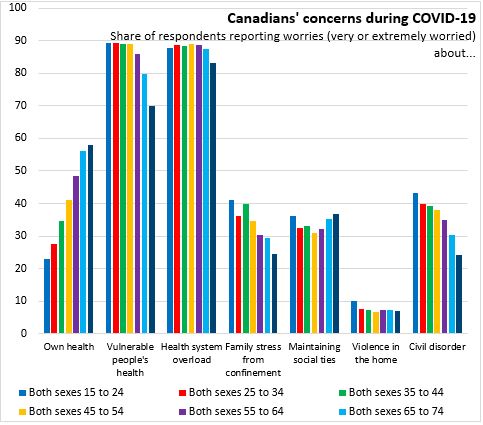
During the COVID-19 pandemic, Statistics Canada has asked Canadians to provide timely information on their concerns about the outbreak, the preparations/precautions made and the impact it is having on their economic and social well-being. Between April 3 and April 9, Statistics Canada asked Canadians through an online questionnaire ("crowdsourcing") about COVID-19. These crowdsourced data sources are not collected under a sample design using a probability-based sampling and should be interpreted with caution as they are not representative of the Canadian population.
Almost 90 per cent of questionnaire respondents reported that they were very worried or extremely worried about vulnerable people's health and about health sysm overload. The prevalence of this worry was slightly lower among the oldest respondents.
Worries about their own health increased with the age of respondents. Worries about social connections were higher among both older and younger respondents. Worries about family stress during confinement, violence in the home and civil disorder were higher among younger respondents.
Over 90 per cent of the respondents to the questionnaire reported following distancing and hand-washing guidelines. A lower share of respondents reported avoiding touching their own face (still >70 per cent). These practices were similar across age and sex cohorts, though older respondents and male respondents reported less avoidance of touching their faces.
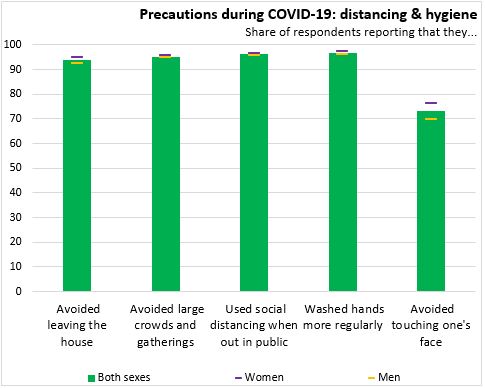
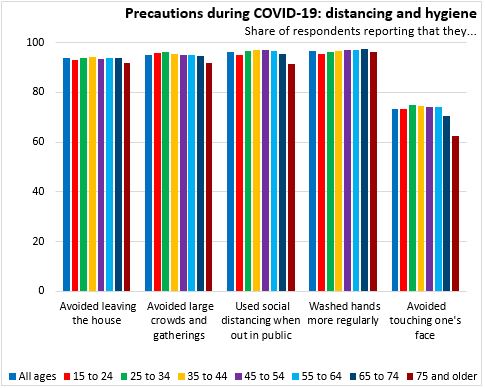
In making preparations for the COVID-19 pandemic over 70 per cent of respondents reported stocking up on essential products at grocery stores and pharmacies (lower for youth). Over 40 per cent of respondents reported filling prescriptions, a proportion that increased among older respondents.
About one-quarter of respondents noted that they had not been to the grocery store or pharmacy in the week prior to filling out the survey. This proportion was higher among older respondents. About 20 per cent of respondents used a grocery store or pharmacy deliver service (higher for older respondents) while about 30 per cent reported using a prepared food delivery service (higher for younger respondents).
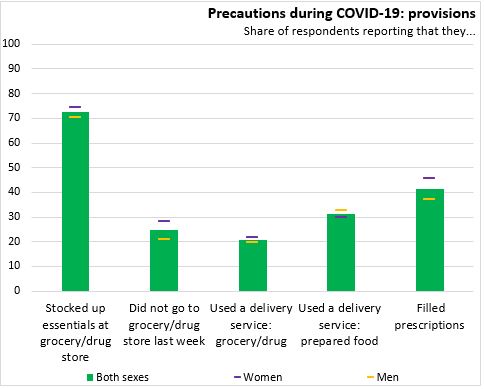
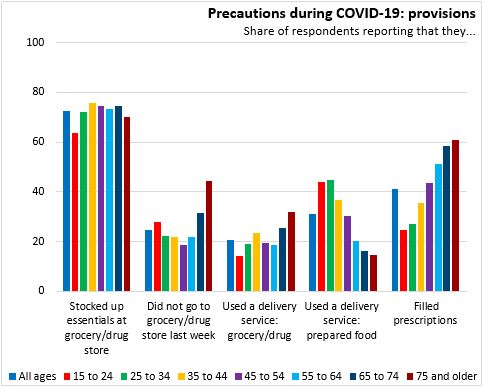
Over 50 per cent of respondents have made a communications plan for maintaining connections with family, friends and neighbours, a proportion that generally increased with age.
Slightly more than two-thirds of respondents with employment reported working from home, a proportion that was higher for those aged 35-44 and 45-54. Just over one-third of respondents feel that they are facing major or moderate impacts on their ability to meet financial obligations and pay for their needs. This proportion was higher among youth and lower among older cohorts. Likewise, a higher portion of youth agree or strongly agere that their might lose their job or their main source of self-employment income. A notably lower portion of older respondents share this concern.
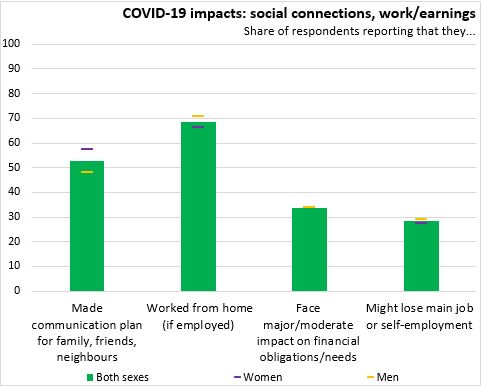
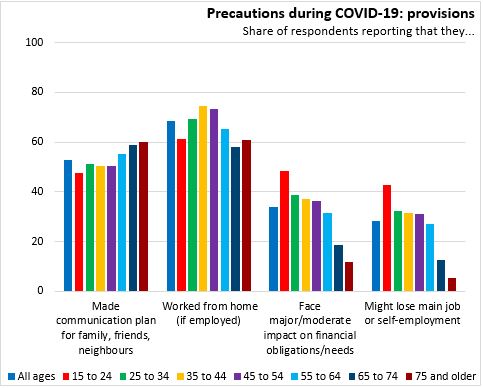
Source: Statistics Canada. Impacts of COVID-19 on Canadians: First Results from Crowdsourcing
<--- Return to Archive